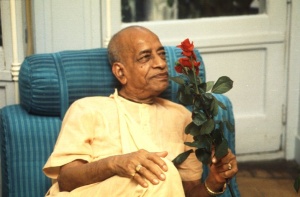CC Madhya 9.11: Difference between revisions
No edit summary |
(Vanibot #0054 edit - transform synonyms into clickable links, which search similar occurrences) |
||
| Line 17: | Line 17: | ||
<div class="synonyms"> | <div class="synonyms"> | ||
''vaiṣṇavera madhye'' | ''[//vanipedia.org/wiki/Special:VaniSearch?s=vaiṣṇavera&tab=syno_o&ds=1 vaiṣṇavera] [//vanipedia.org/wiki/Special:VaniSearch?s=madhye&tab=syno_o&ds=1 madhye]'' — amongst Vaiṣṇavas; ''[//vanipedia.org/wiki/Special:VaniSearch?s=rāma&tab=syno_o&ds=1 rāma]-[//vanipedia.org/wiki/Special:VaniSearch?s=upāsaka&tab=syno_o&ds=1 upāsaka] [//vanipedia.org/wiki/Special:VaniSearch?s=saba&tab=syno_o&ds=1 saba]'' — all worshipers of Lord Śrī Rāmacandra; ''[//vanipedia.org/wiki/Special:VaniSearch?s=keha&tab=syno_o&ds=1 keha]'' — someone; ''[//vanipedia.org/wiki/Special:VaniSearch?s=tattva&tab=syno_o&ds=1 tattva]-[//vanipedia.org/wiki/Special:VaniSearch?s=vādī&tab=syno_o&ds=1 vādī]'' — followers of Madhvācārya; ''[//vanipedia.org/wiki/Special:VaniSearch?s=keha&tab=syno_o&ds=1 keha]'' — someone; ''[//vanipedia.org/wiki/Special:VaniSearch?s=haya&tab=syno_o&ds=1 haya]'' — is; ''[//vanipedia.org/wiki/Special:VaniSearch?s=śrī&tab=syno_o&ds=1 śrī]-[//vanipedia.org/wiki/Special:VaniSearch?s=vaiṣṇava&tab=syno_o&ds=1 vaiṣṇava]'' — devotees following the disciplic succession of Śrī Rāmānujācārya. | ||
</div> | </div> | ||
Latest revision as of 00:01, 20 February 2024

A.C. Bhaktivedanta Swami Prabhupada
TEXT 11
- vaiṣṇavera madhye rāma-upāsaka saba
- keha ‘tattvavādī’, keha haya ‘śrī-vaiṣṇava’
SYNONYMS
vaiṣṇavera madhye — amongst Vaiṣṇavas; rāma-upāsaka saba — all worshipers of Lord Śrī Rāmacandra; keha — someone; tattva-vādī — followers of Madhvācārya; keha — someone; haya — is; śrī-vaiṣṇava — devotees following the disciplic succession of Śrī Rāmānujācārya.
TRANSLATION
At the time, all the South Indian Vaiṣṇavas were worshipers of Lord Rāmacandra. Some were Tattvavādīs, and some were followers of Rāmānujācārya.
PURPORT
Śrīla Bhaktisiddhānta Sarasvatī Ṭhākura points out that the word “Tattvavādī” refers to the followers of Śrīla Madhvācārya. To distinguish his disciplic succession from the Māyāvādī followers of Śaṅkarācārya, Śrīla Madhvācārya named his party the Tattvavādīs. Impersonal monists are always attacked by these Tattvavādīs, who attempt to defeat their philosophy of impersonalism. Generally, they establish the supremacy of the Supreme Personality of Godhead. Actually the disciplic succession of Madhvācārya is known as the Brahmā Vaiṣṇava sect; that is the sect coming down from Lord Brahmā. Consequently the Tattvavādīs, or followers of Madhvācārya, do not accept the incident of Lord Brahmā’s illusion, which is recorded in the Tenth Canto of Śrīmad-Bhāgavatam. Śrīla Madhvācārya has purposefully avoided commenting on that portion of Śrīmad-Bhāgavatam in which brahma-mohana, the illusion of Lord Brahmā, is mentioned. Śrīla Mādhavendra Purī was one of the ācāryas in the Tattvavāda disciplic succession, and he established the ultimate goal of transcendentalism to be attainment of pure devotional service, love of Godhead. Those Vaiṣṇavas belonging to the Gauḍīya-sampradāya, the disciplic succession following Śrī Caitanya Mahāprabhu, are distinct from the Tattvavādīs, although they belong to the same Tattvavāda-sampradāya. The followers of Śrī Caitanya Mahāprabhu are therefore known as the Mādhva-Gauḍīya-sampradāya.
The word pāṣaṇḍī refers to those who are opposed to pure devotional service. In particular, these are the Māyāvādīs, the impersonalists. A definition of pāṣaṇḍī is given in the Hari-bhakti-vilāsa (1.73), wherein it is stated:
- yas tu nārāyaṇaṁ devaṁ brahma-rudrādi-daivataiḥ
- samatvenaiva vīkṣeta sa pāṣaṇḍī bhaved dhruvam
- (CC Madhya 18.116)
A pāṣaṇḍī is one who thinks that the Supreme Lord Nārāyaṇa, the Personality of Godhead, is on the same level with the demigods, headed by Lord Brahmā and Lord Śiva. A devotee never considers Lord Nārāyaṇa to be on the same platform with Lord Brahmā and Lord Śiva. The Madhvācārya-sampradāya and Rāmānuja-sampradāya are mainly worshipers of Lord Rāmacandra, although the Śrī Vaiṣṇavas are supposed to be worshipers of Lord Nārāyaṇa and Lakṣmī and the Tattvavādīs are supposed to be worshipers of Lord Kṛṣṇa. At present, in most of the monasteries belonging to the Madhva-sampradāya, Lord Rāmacandra is worshiped.
In the book known as Adhyātma-rāmāyaṇa, there are statements in Chapters Twelve to Fifteen about worshiping the Deities of Śrī Rāmacandra and Sītā. There it is stated that during Lord Rāmacandra’s time there was a brāhmaṇa who took a vow to fast until he saw Lord Rāmacandra. Sometimes, due to business, Lord Rāmacandra was absent from His capital for a full week and could not be seen by the citizens during that time. Because of his vow, the brāhmaṇa could not take even a drop of water during that week. Later, after eight or nine days, when the brāhmaṇa could see Lord Rāmacandra personally, he would break his fast. Upon observing the brāhmaṇa’s rigid vow, Lord Śrī Rāmacandra ordered His younger brother Lakṣmaṇa to deliver a pair of Sītā-Rāma Deities to the brāhmaṇa. The brāhmaṇa received the Deities from Śrī Lakṣmaṇajī and worshiped Them faithfully as long as he lived. At the time of his death, he delivered the Deities to Śrī Hanumānjī, who, for many years, hung Them around his neck and served Them with all devotion. After many years, when Hanumānjī departed on the hill known as Gandha-mādana, he delivered the Deities to Bhīmasena, one of the Pāṇḍavas, and Bhīmasena brought Them to his palace, where he kept Them very carefully. The last king of the Pāṇḍavas, Kṣemakānta, worshiped the Deities in that palace. Later, the same Deities were kept in the custody of the kings of Orissa known as Gajapatis. One of the ācāryas, known as Narahari Tīrtha, who was in the disciplic succession of Madhvācārya, received these Deities from the King of Orissa.
It may be noted that these particular Deities of Rāma and Sītā have been worshiped from the time of King Ikṣvāku. Indeed, They were worshiped by the royal princes even before the appearance of Lord Rāmacandra. Later, during Lord Rāmacandra’s presence, the Deities were worshiped by Lakṣmaṇa. It is said that just three months before his disappearance, Śrī Madhvācārya received these Deities and installed them in the Uḍupī temple. Since then the Deities have been worshiped by the Madhvācārya-sampradāya at that monastery. As far as the Śrī Vaiṣṇavas are concerned, beginning with Rāmānujācārya, they also worshiped Deities of Sītā-Rāma. Sītā-Rāma Deities are also being worshiped in Tirupati and other places. From the Śrī Rāmānuja-sampradāya there is another branch known as Rāmānandī or Rāmāt, and the followers of that branch also worship Deities of Sītā-Rāma very rigidly. The Rāmānuja-sampradāya Vaiṣṇavas prefer the worship of Lord Rāmacandra to that of Rādhā-Kṛṣṇa.